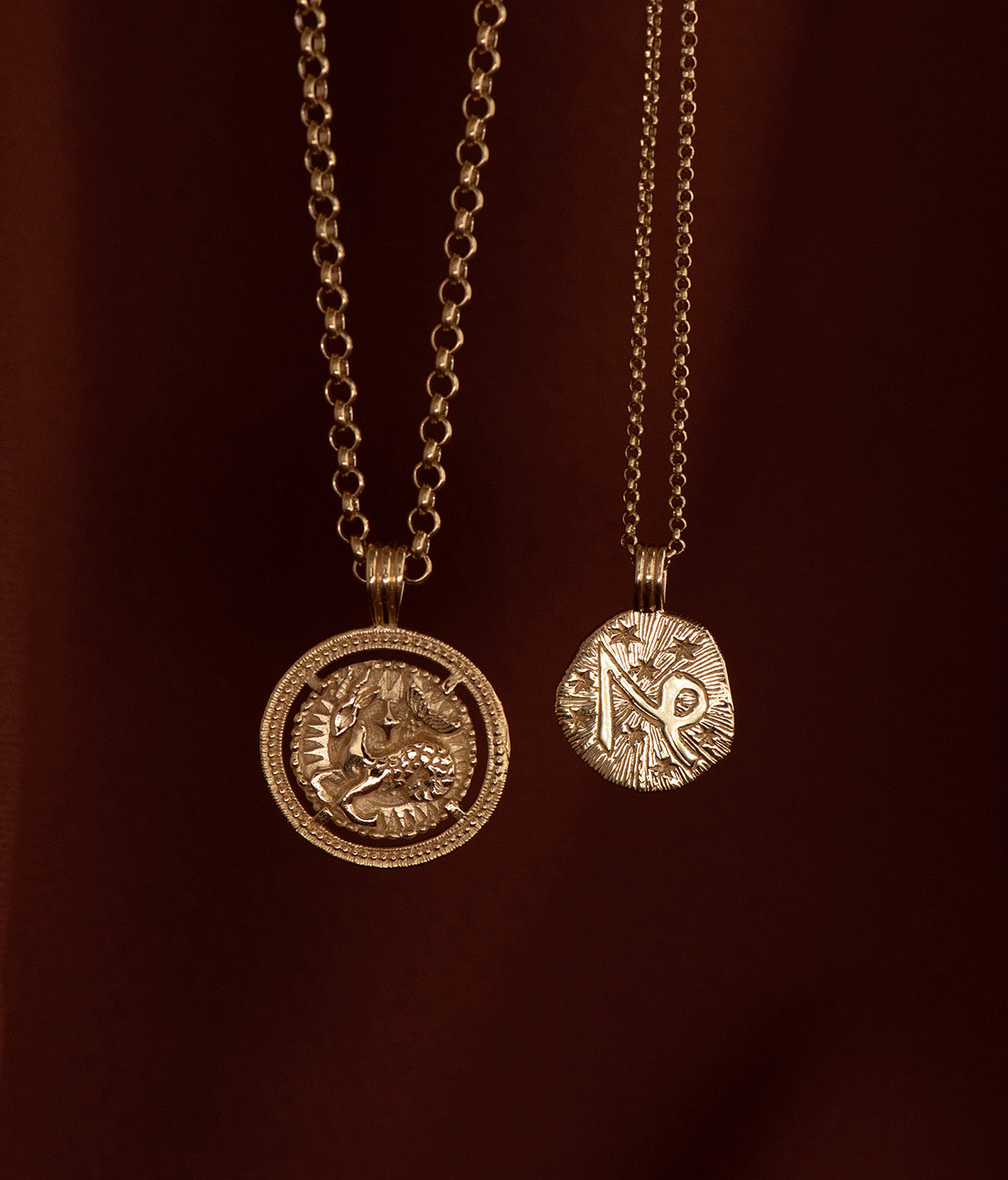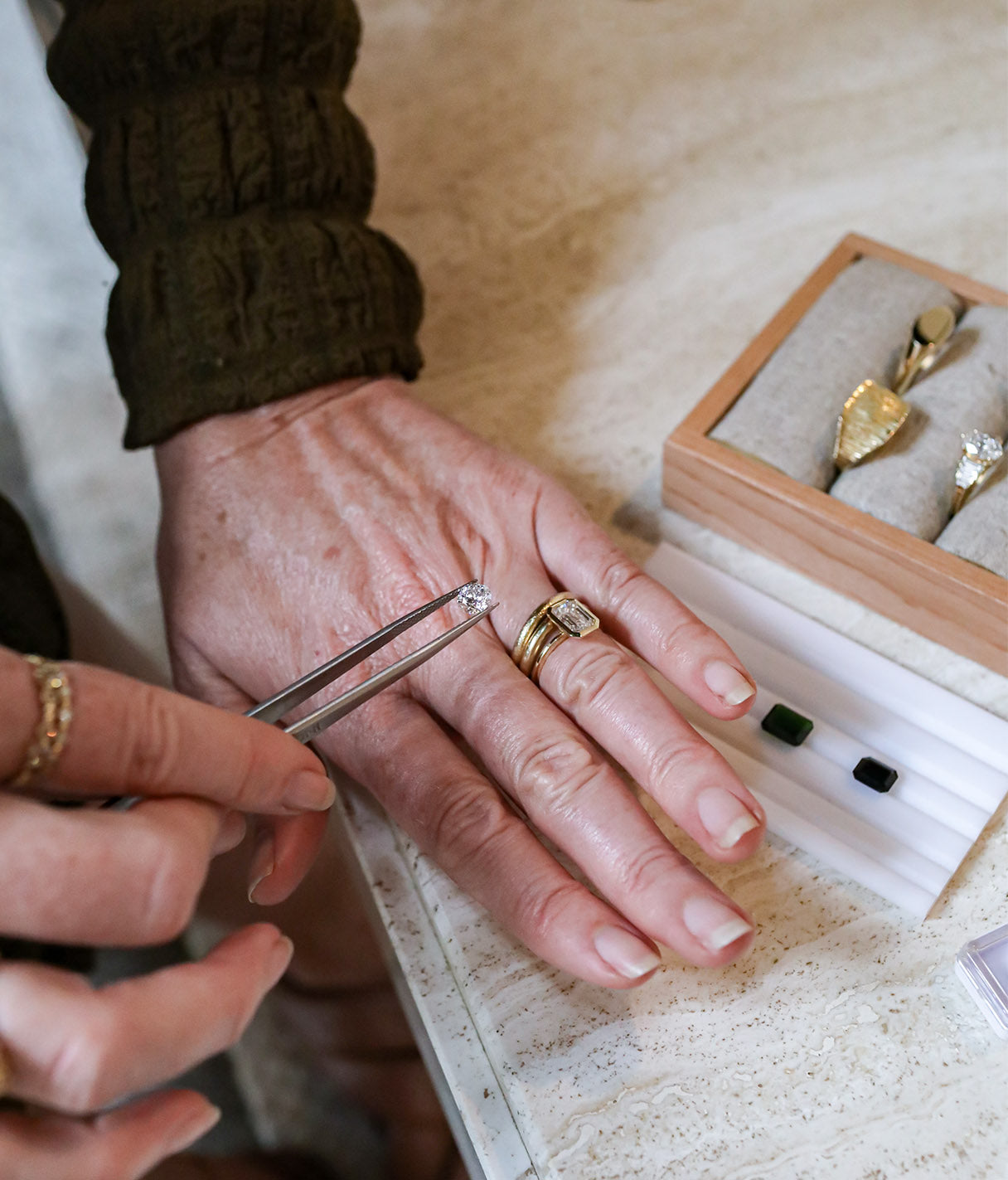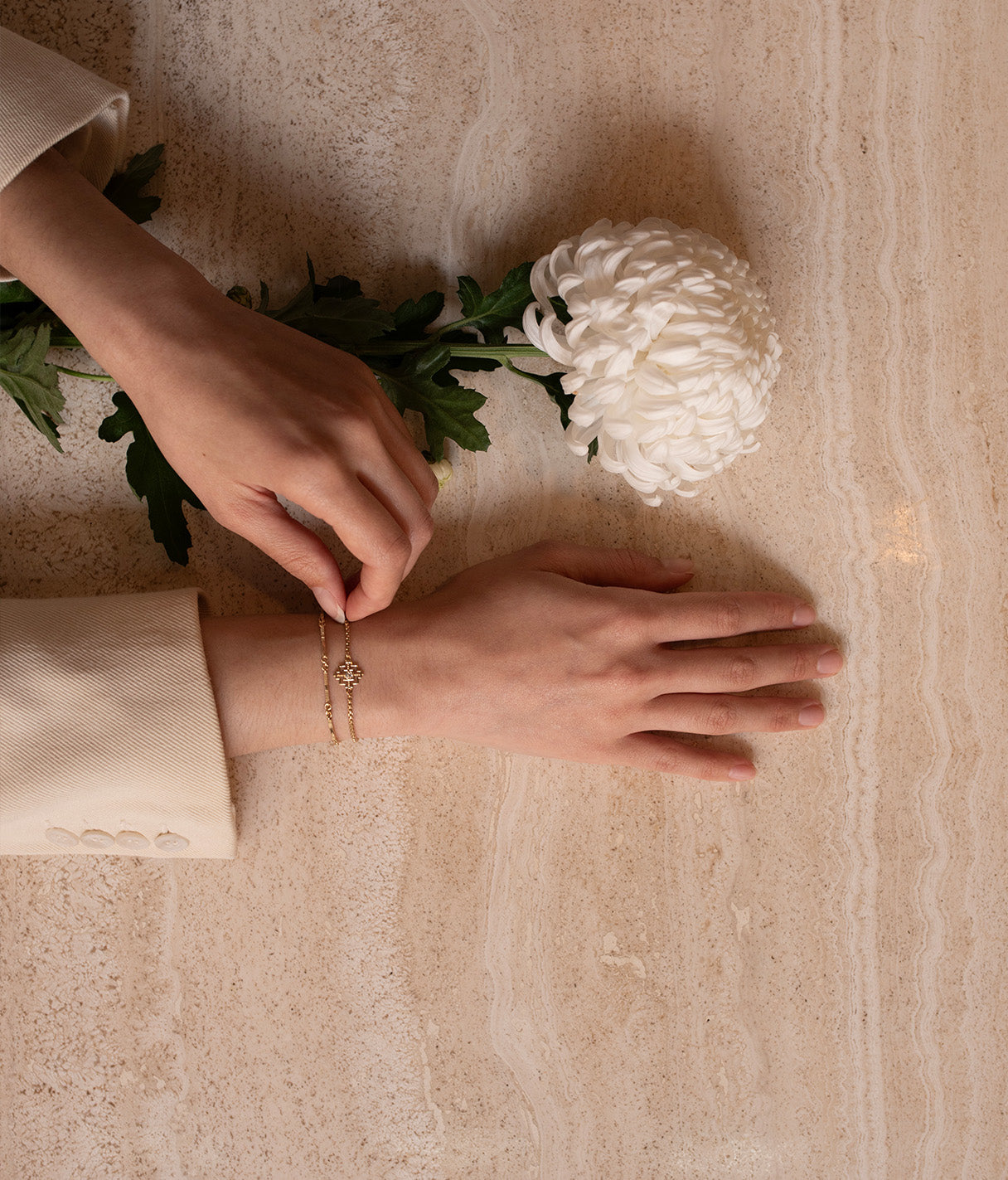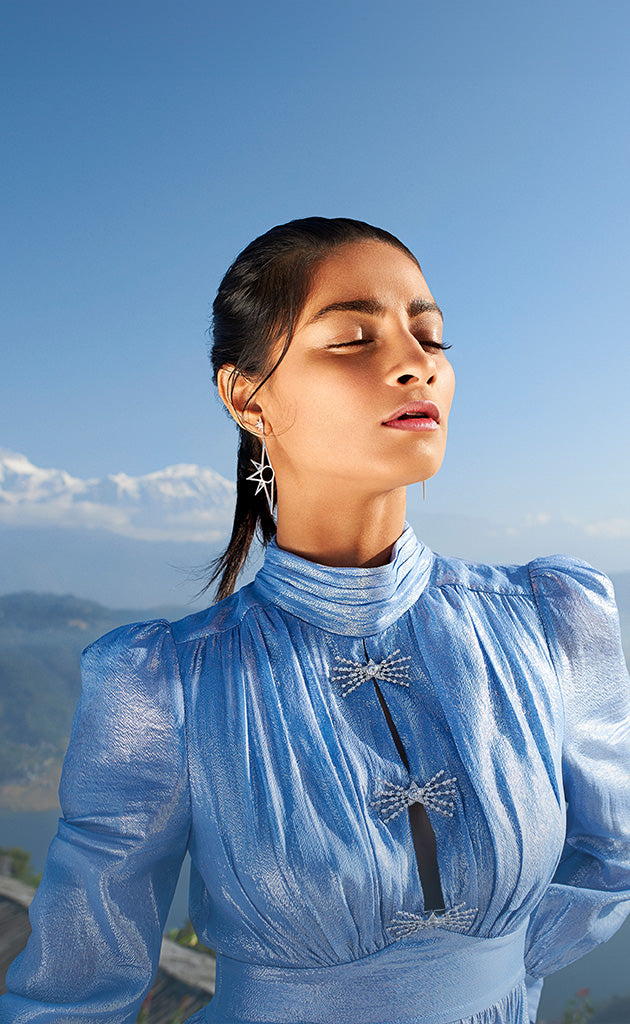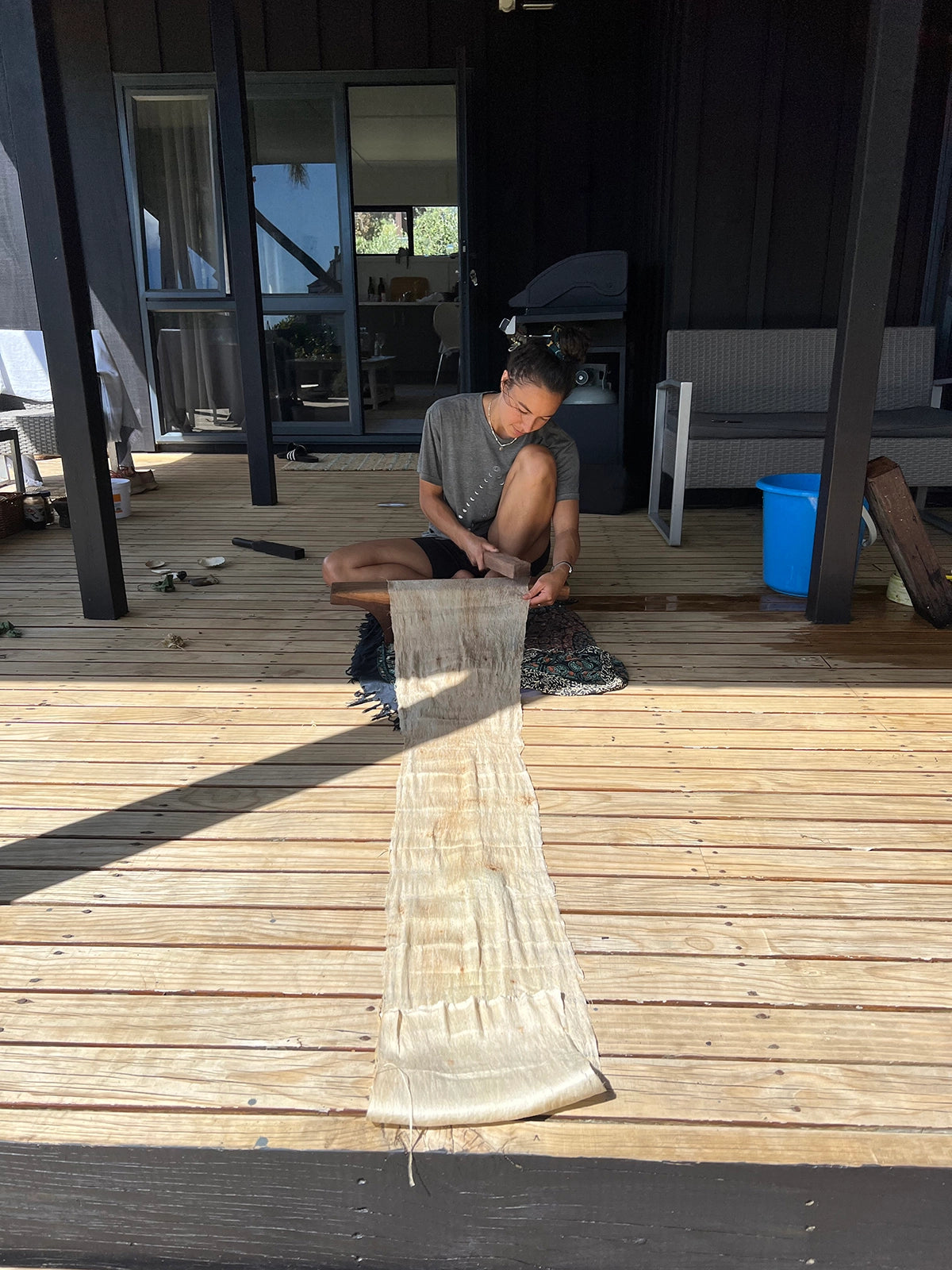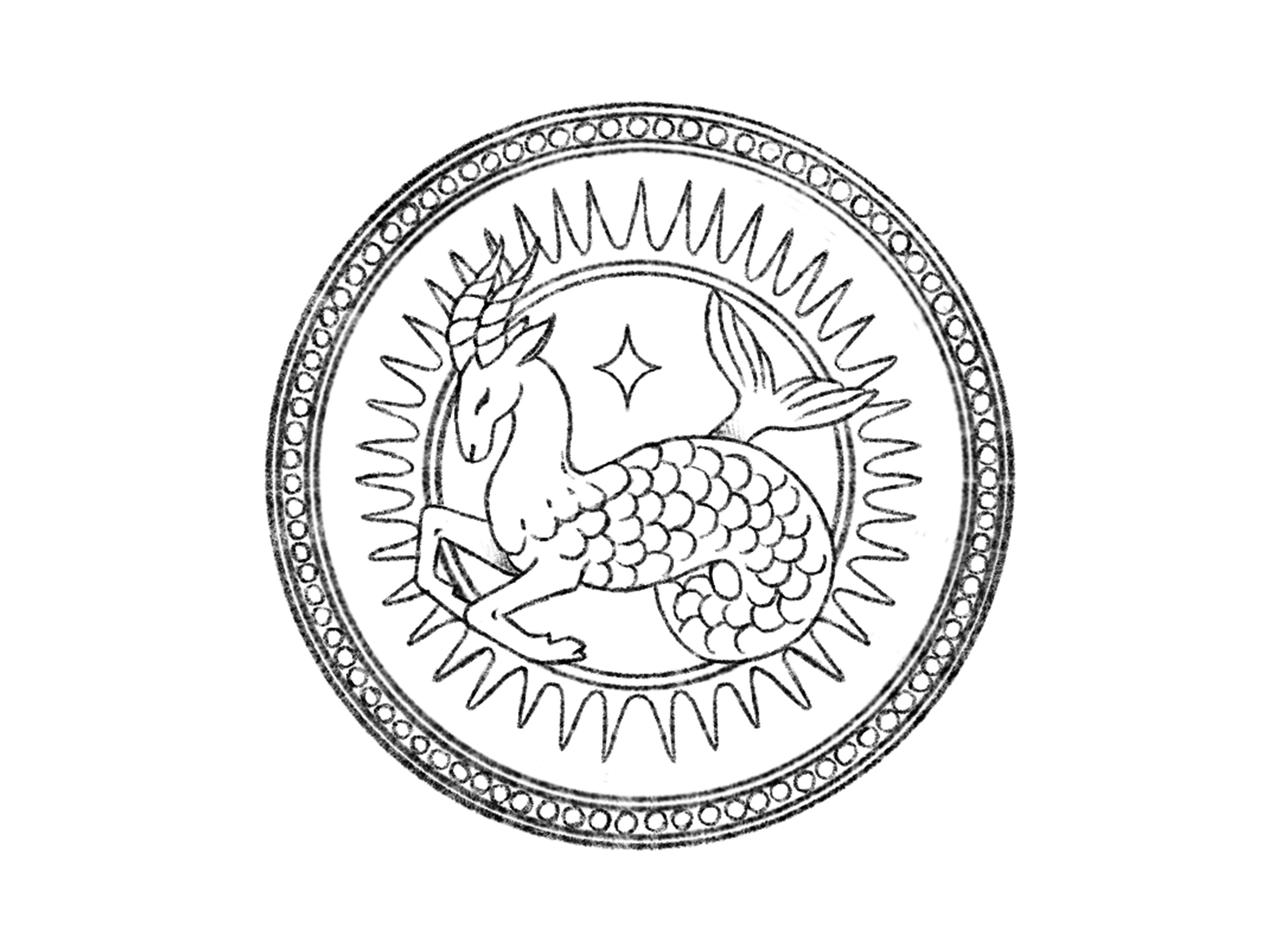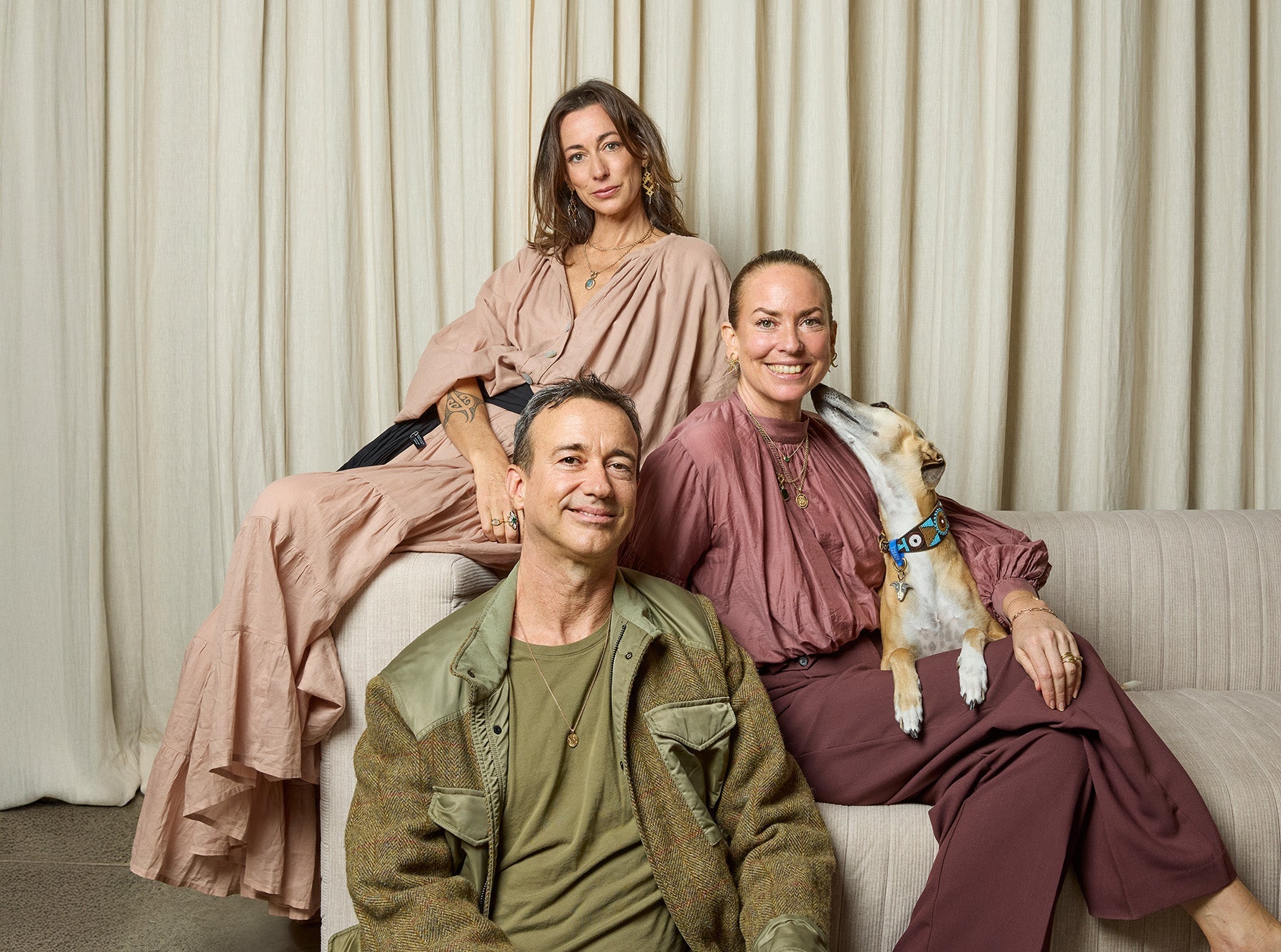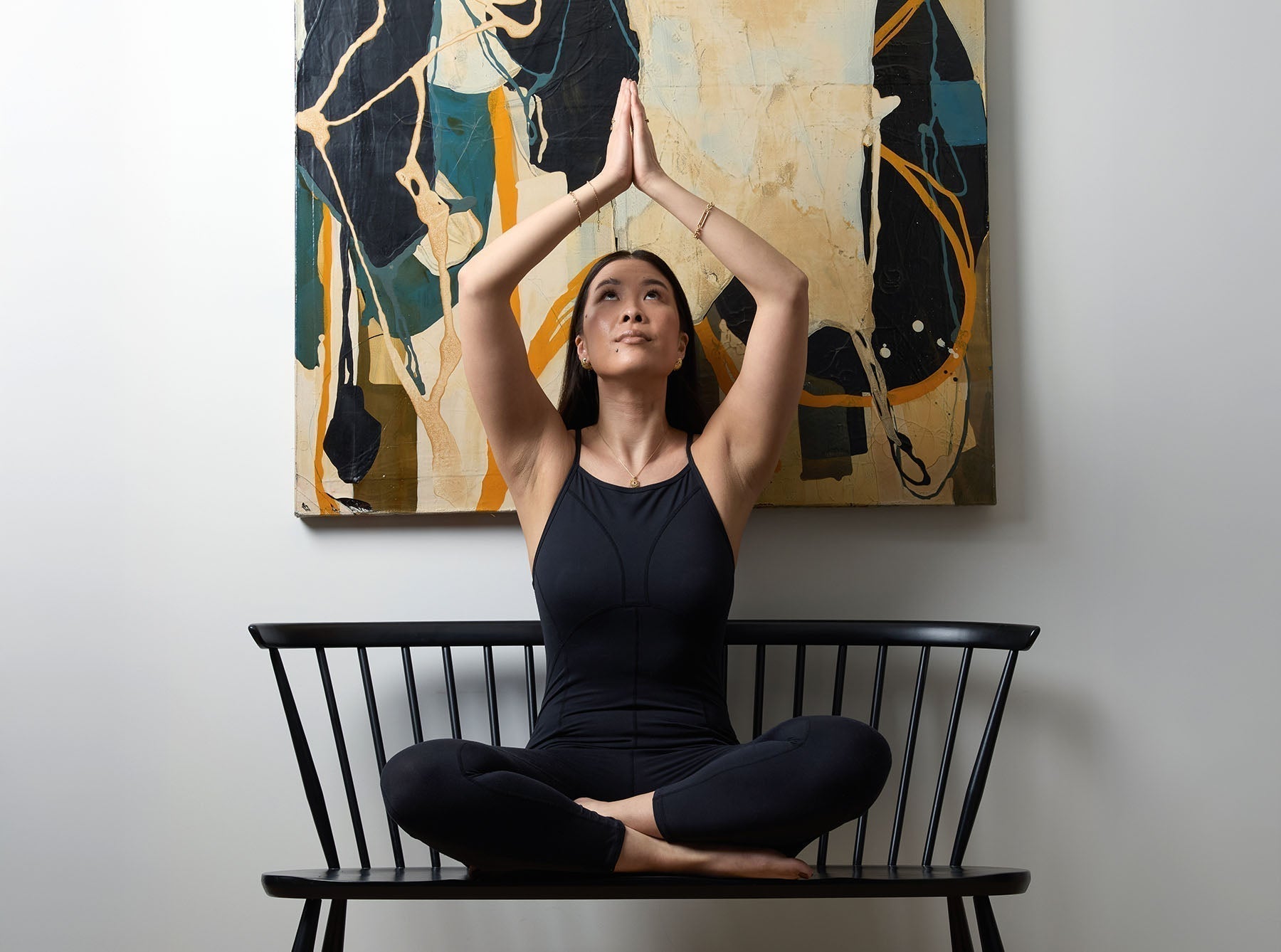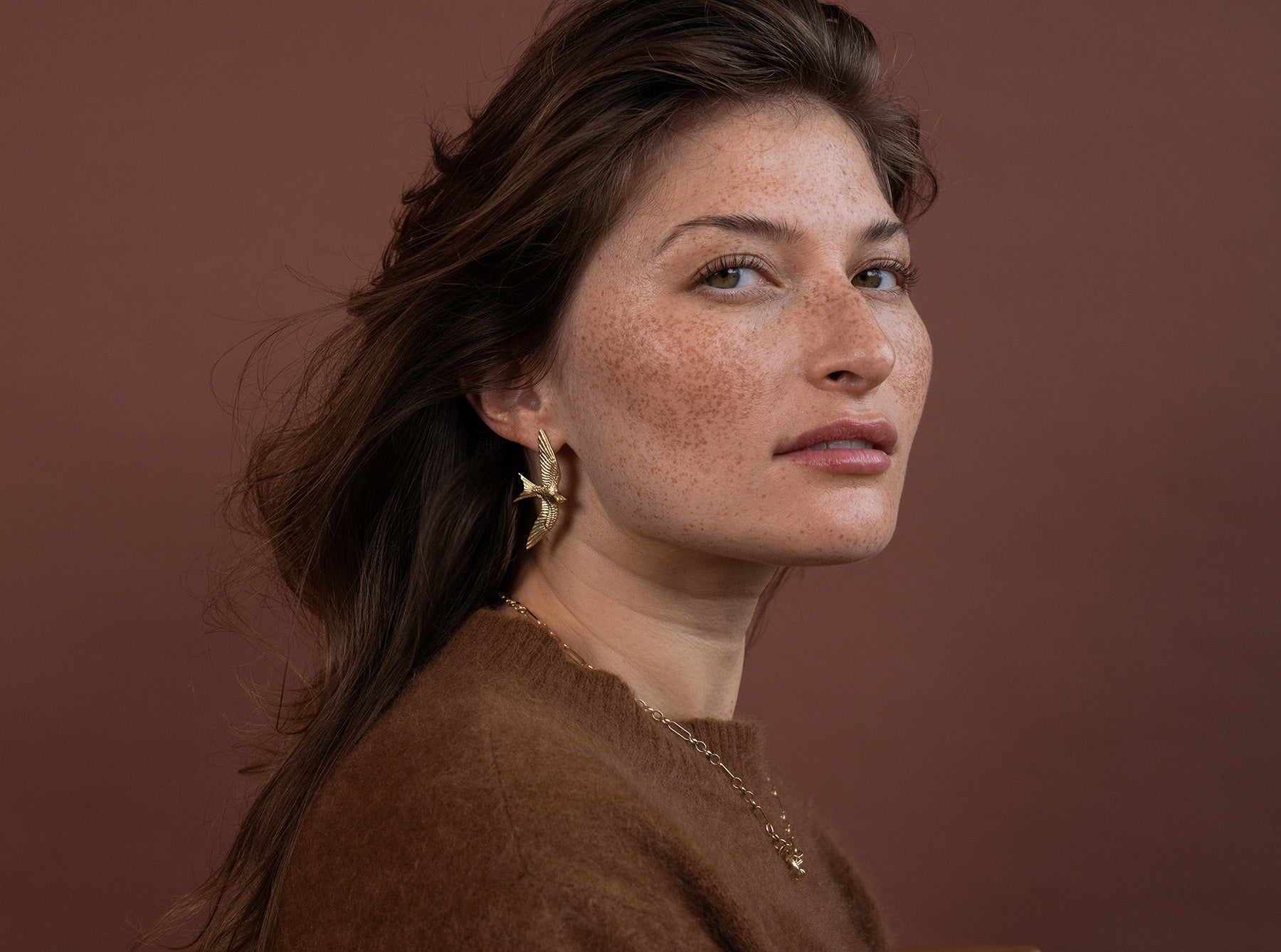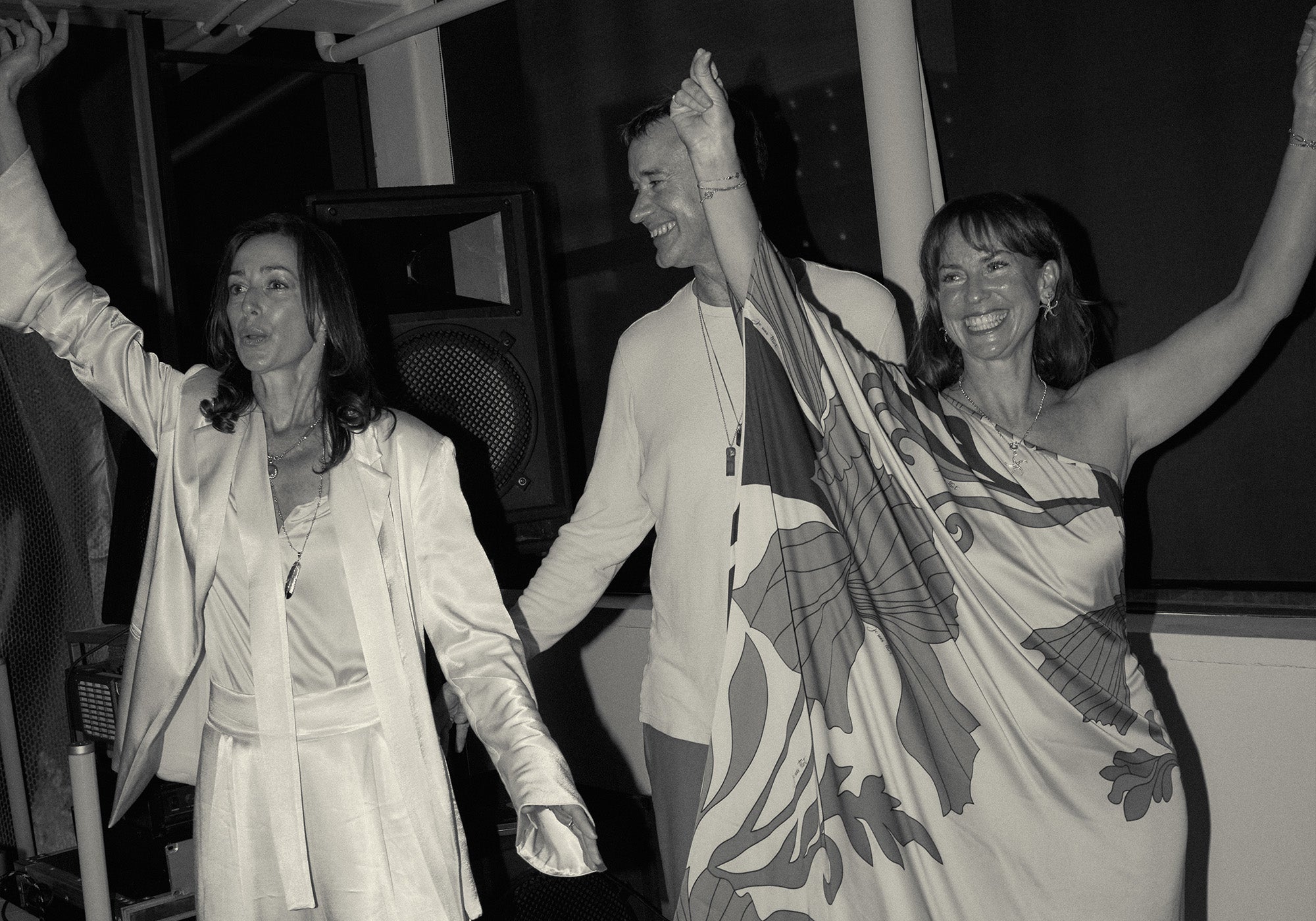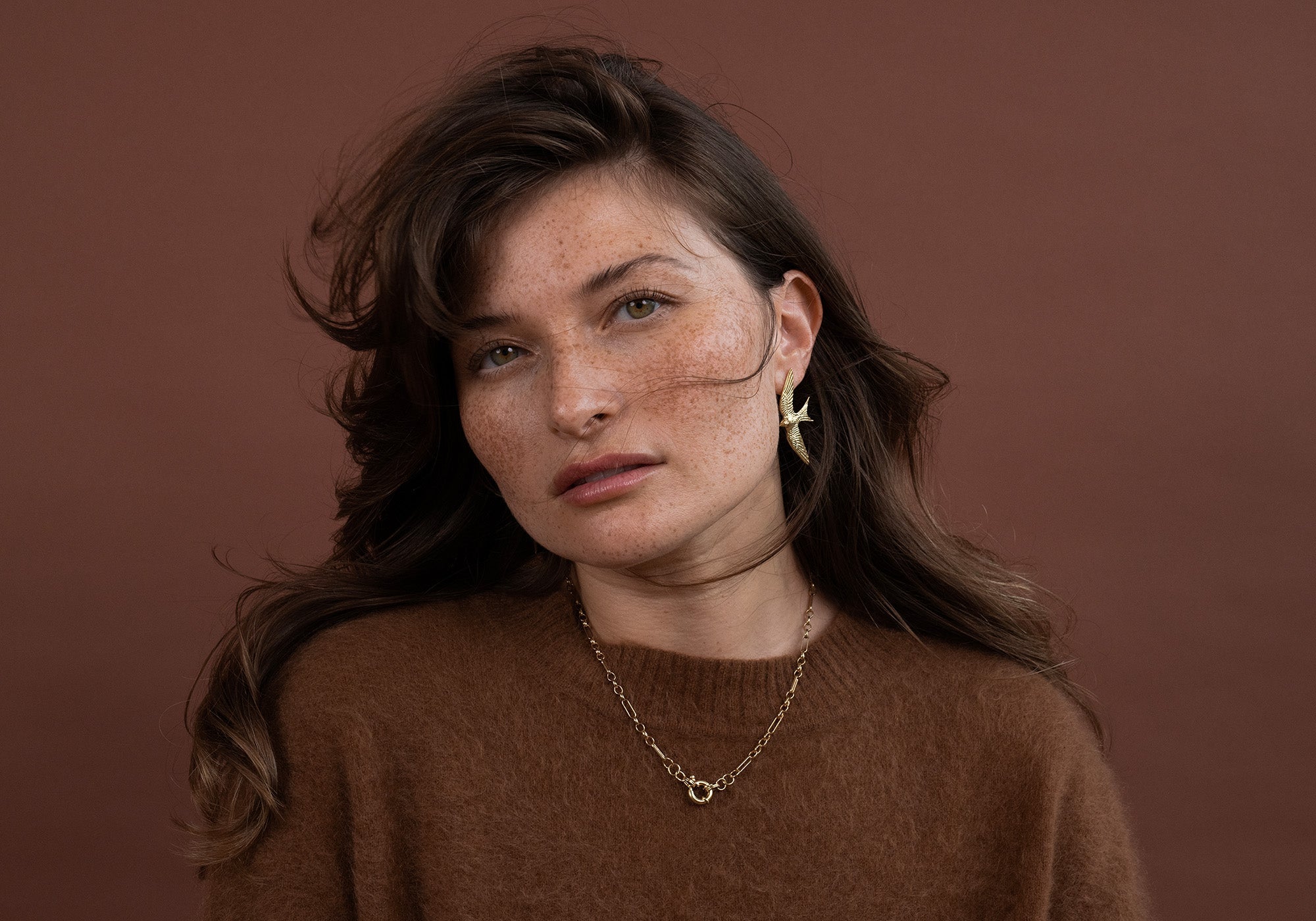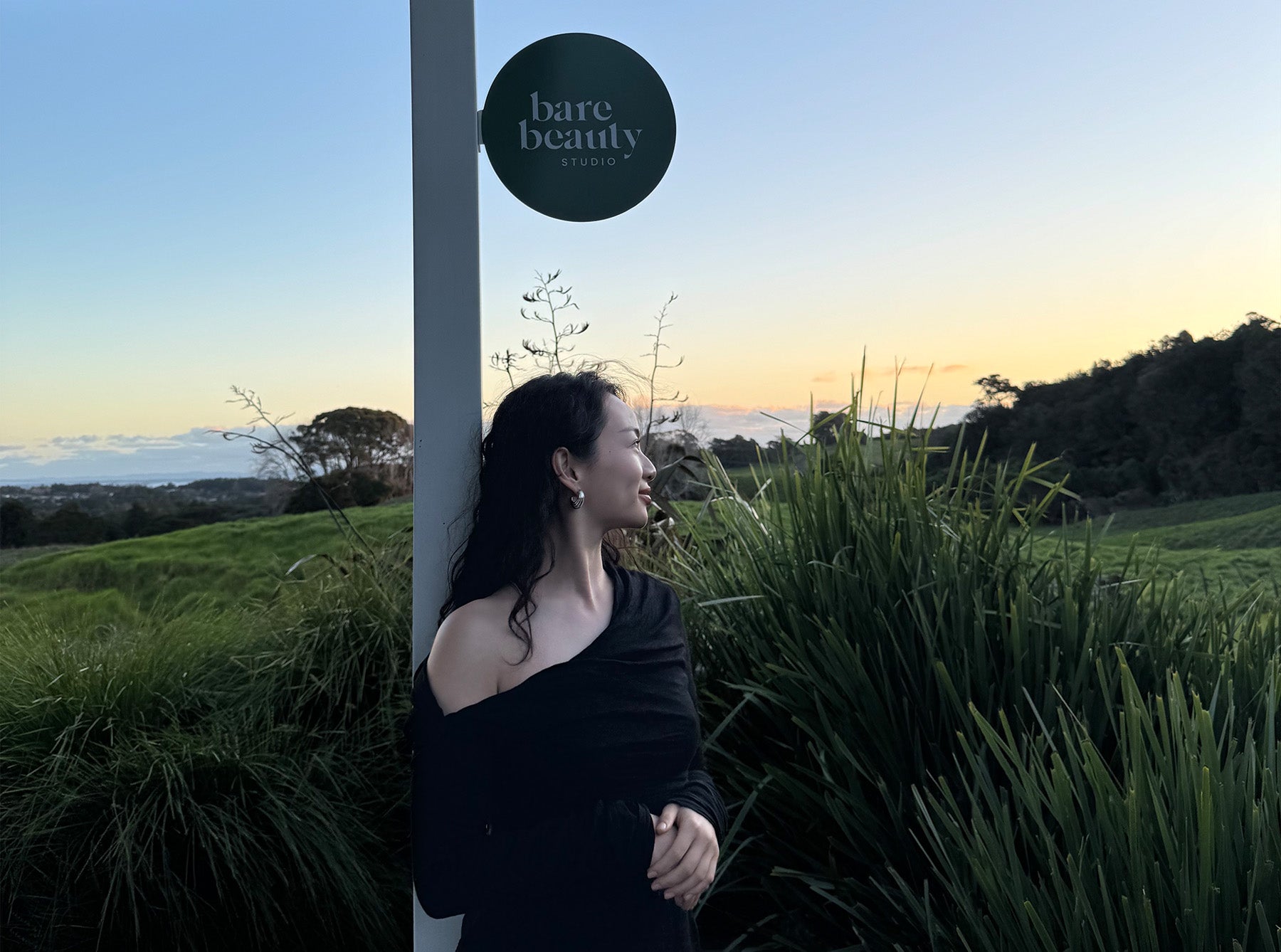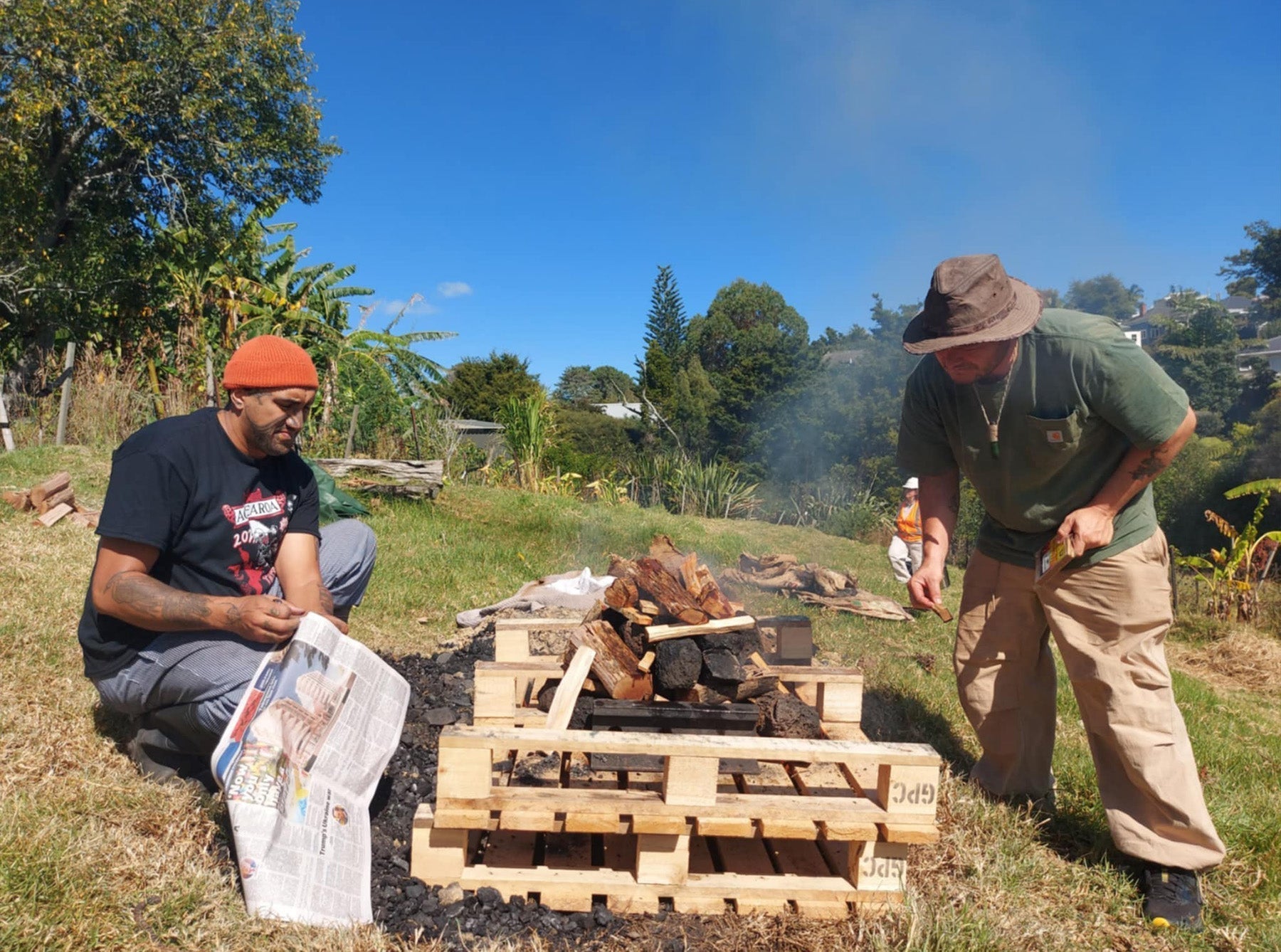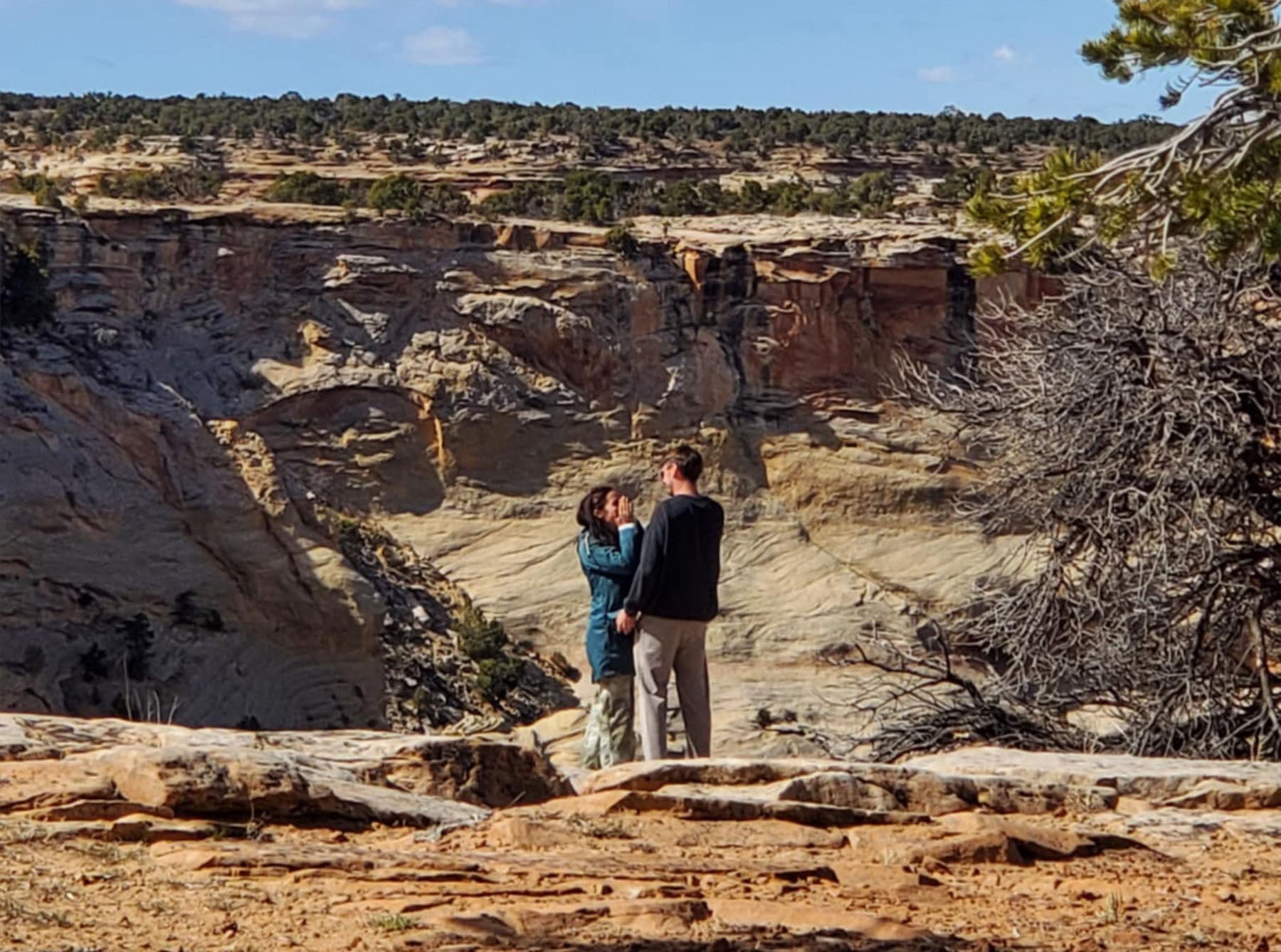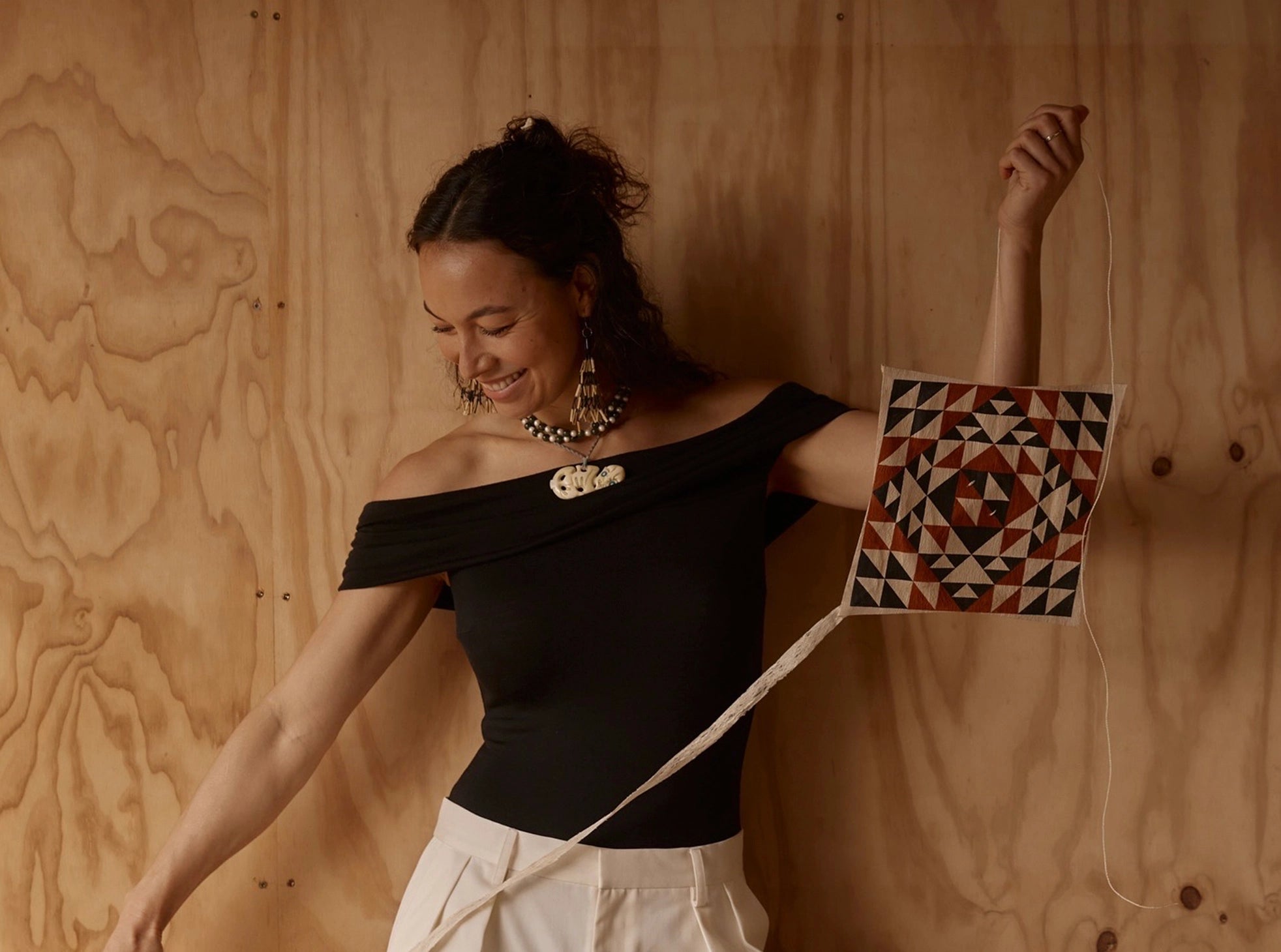

Could you introduce yourself to our community? Tell us a bit about yourself and your journey to where you are now.
My hapū is Ngāi Tūpoto and my iwi are Te Rarawa and Ngāpuhi. I am from the Hokianga in the Far North. I grew up in Grey Lynn with my mum and visited my dad and siblings a lot who lived/live in the North. My mum is a clothes designer who runs Moa alongside my aunty in Grey Lynn. When I was growing up it was a bigger collective of female makers, committed to the local fashion industry. I was surrounded by creative powerhouses from a young age, my mum and aunty shared a studio under the house with two big cutting tables with rolls of fabric underneath. Making is something that feels intrinsically human and the creation of clothing has always seemed like a honest way to make a living. My nana was an artist too and she always wanted me to become an artist. I went to art school out of an obligation to my essential nature. I did resist Elam, I tried to go to Ilam in Christchurch but the earthquake happened so I ended up there anyway. I did a BFA and a BA in Māori Studies and Media.
Even though I was a straight-A student, I still found those first years at university extremely difficult. Elam destroyed everything I thought art was, it valued the expression of an idea in its most stripped-back form and sometimes doing less was more. I had a hard time accepting these new forms of conceptual art and when I found Matua Dante’s workshop of stone tools and shells I relished in the physicality of the process.
It was also conceptually meaningful because I could feel a sense of connection to my ancestors. Working in the workshop also helped me process some of the heavy and often devastating lectures we had on Māori (discrimination) in Media, Māori in the health system, Te Tiriti o Waitangi, The Land Wars et cetera. Ultimately Elam taught me how to think critically and be determined to make work that no matter how much I might be criticised or the challenges that I might face I am committed to. It is that commitment and single-mindedness that creatives need to survive.
Could you share what brings the feeling of freedom into your life, and how does that feel for you?
Being an artist is the ultimate freedom you can ever experience and it is an absolute privilege to be able to live this way. Making social commentary on issues, speaking your truth without having to worry if these perspectives will impact your career. It is my job to be on the outskirts and see clearly what is happening and try to make it clear to others. I’m not saying that living as an artist is easy but having this freedom is not widely known and it is what we do with this freedom that matters.
In art school you face this problem, the unlimited possibilities of this freedom, it can be overwhelming and honestly that is why there is a lot of pointless, self-indulgent art produced by artists who have nothing grounding them. Our Māori world provides anchoring for how we navigate space, we have existing conceptualisations of the cosmic (pro)creative process and ultimately understanding that there are no new ideas and therefore all ideas have a whakapapa is the kind of humbling artists needs. Going to Elam also helped me understand this freedom too, first by revealing it to me and then teaching me to think critically. I approach my freedom first by unpacking the obligations that come with it and who before me fought for it, so I could be here.
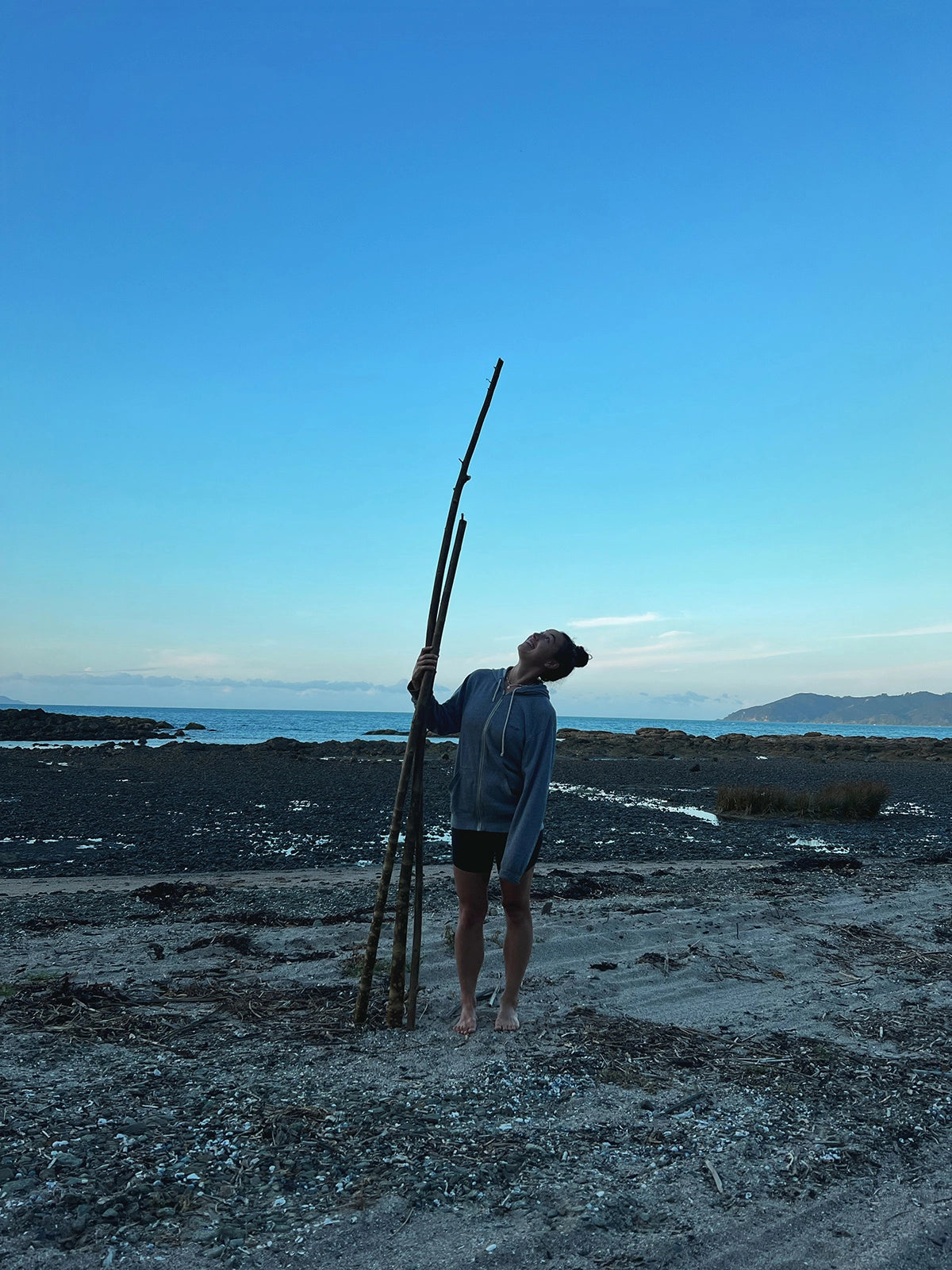
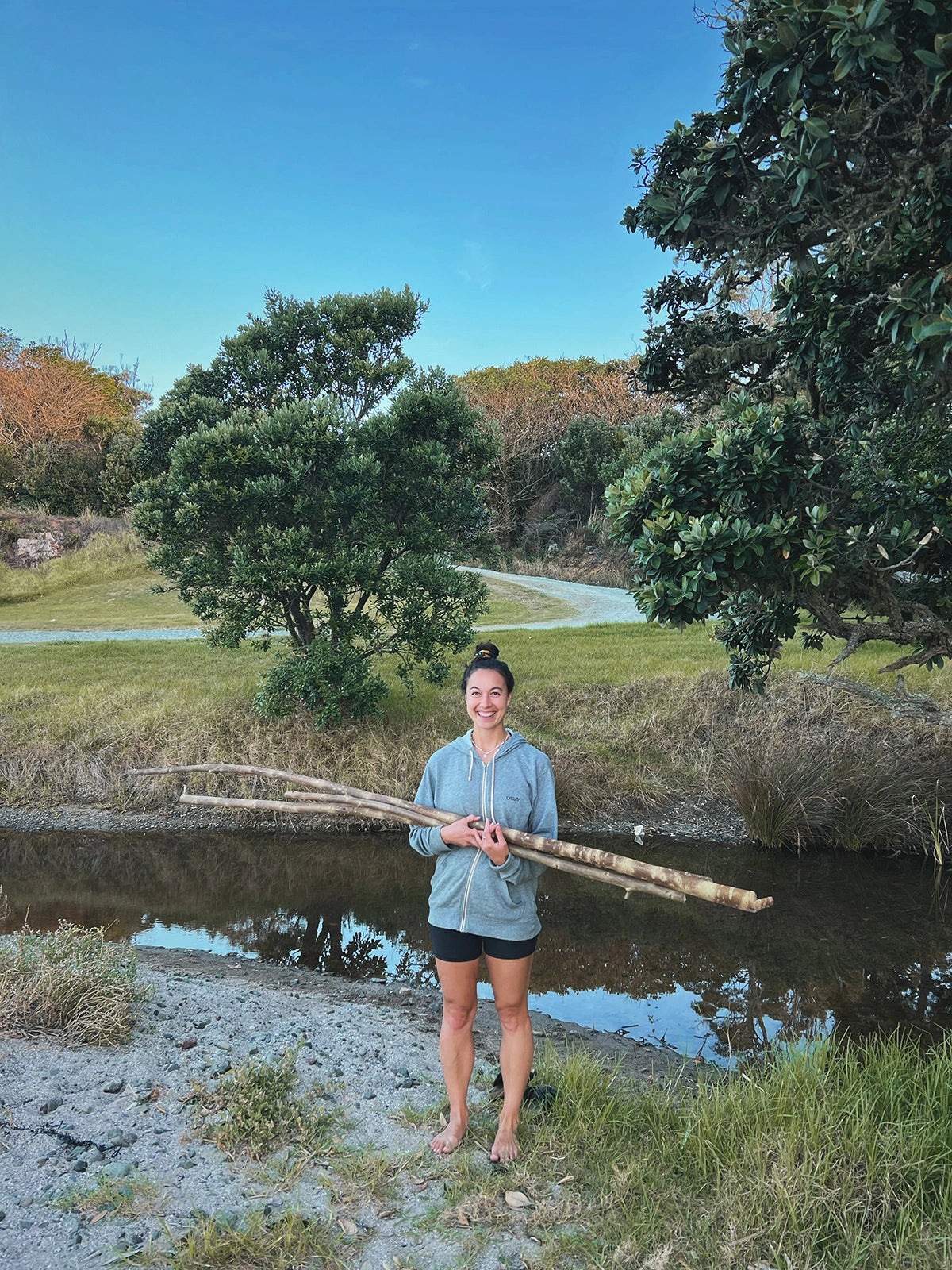
Your artwork tells unique stories with every individual piece, which is so beautifully inspiring. What does it mean to you to flow your Māori heritage throughout your work?
As a ringatoi Māori my culture is the centre of all my decisions. My practice revolves around the aute plant, and its cultivation and harvesting cycles. These processes connect me to the environment as well as my ancestors. Peeling and beating the bark of the aute plant is another reminder of the ingenuity of our tūpuna who could unlock the secret inner fibre of aute and harakeke. Harvesting kōkōwai connects me to the stories contained within the red ochre that come from the beginning of time. The adornment and patterns I create, while they may inform your first impression are really the final touches of a much wider generative process. Everything about the process reinforces our tikanga Māori and value system and I carry this through all aspects of my practice as an artist.
When do you feel most alive in terms of your creative process?
I feel most alive when I’m cutting down aute or peeling off the bark, with my thighs covered in sap and nails dirty. The physicality of the process is what I live for!
Do you have a favourite piece of jewellery? What does it mean to you?
I wear my hei tiki every day. It was made by Rangi Kipa, who is my mentor. It was given to me when I graduated. Rangi is one of our most important Māori artists who has pioneered Māori whakairo (carving), tā moko, visual language, design and architecture. He is a massive inspiration to me and my hei tiki represents striving for excellence always.
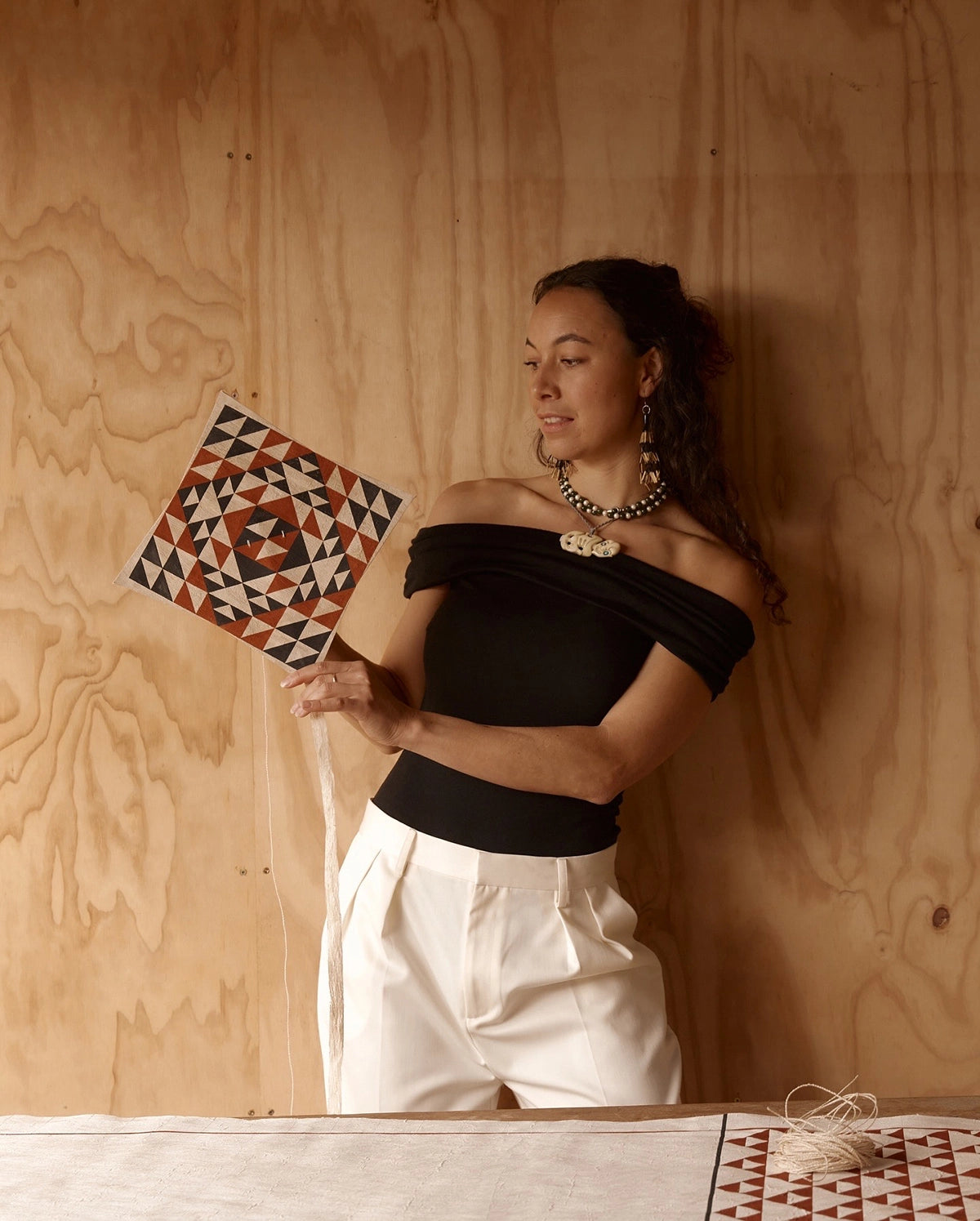
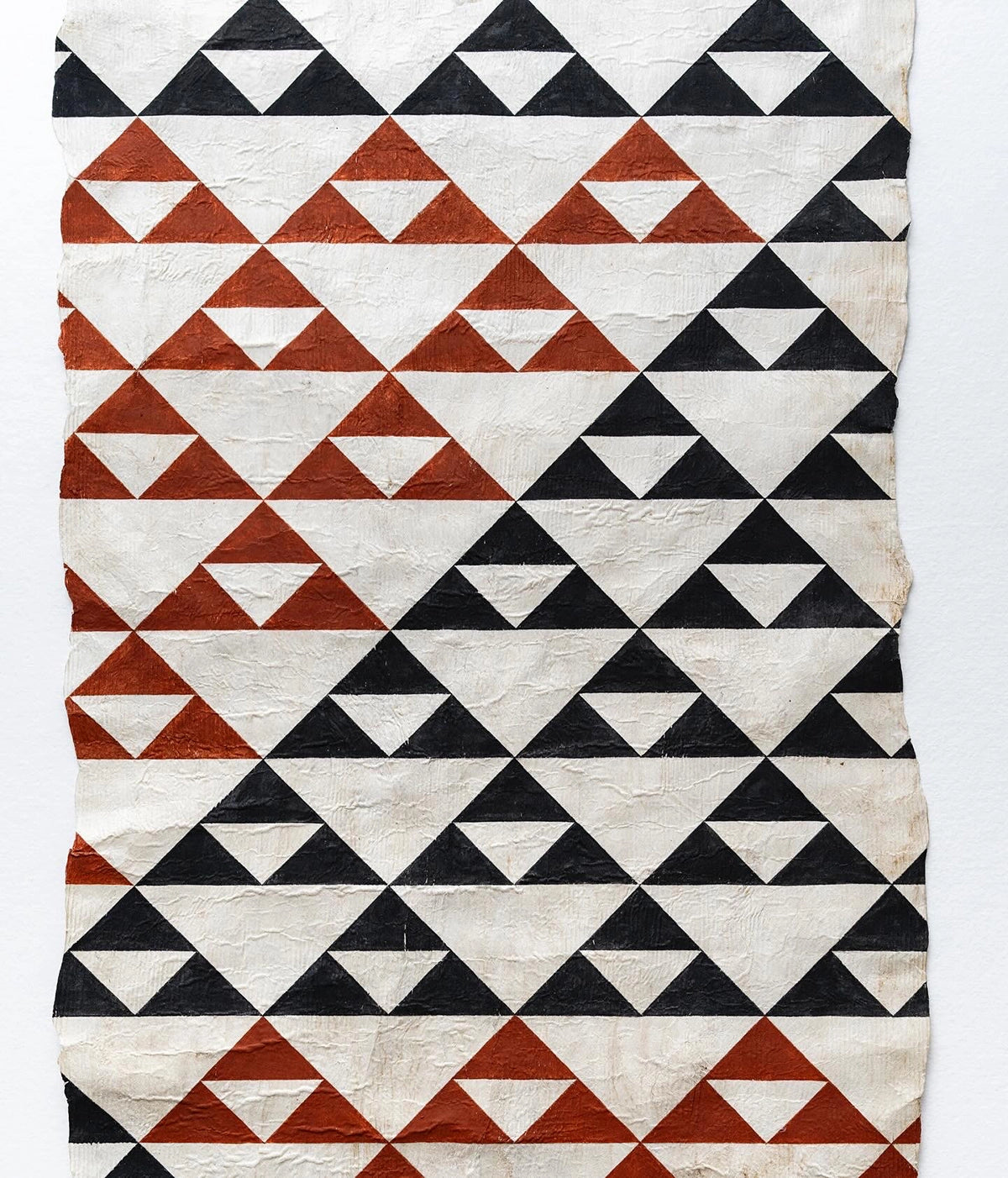
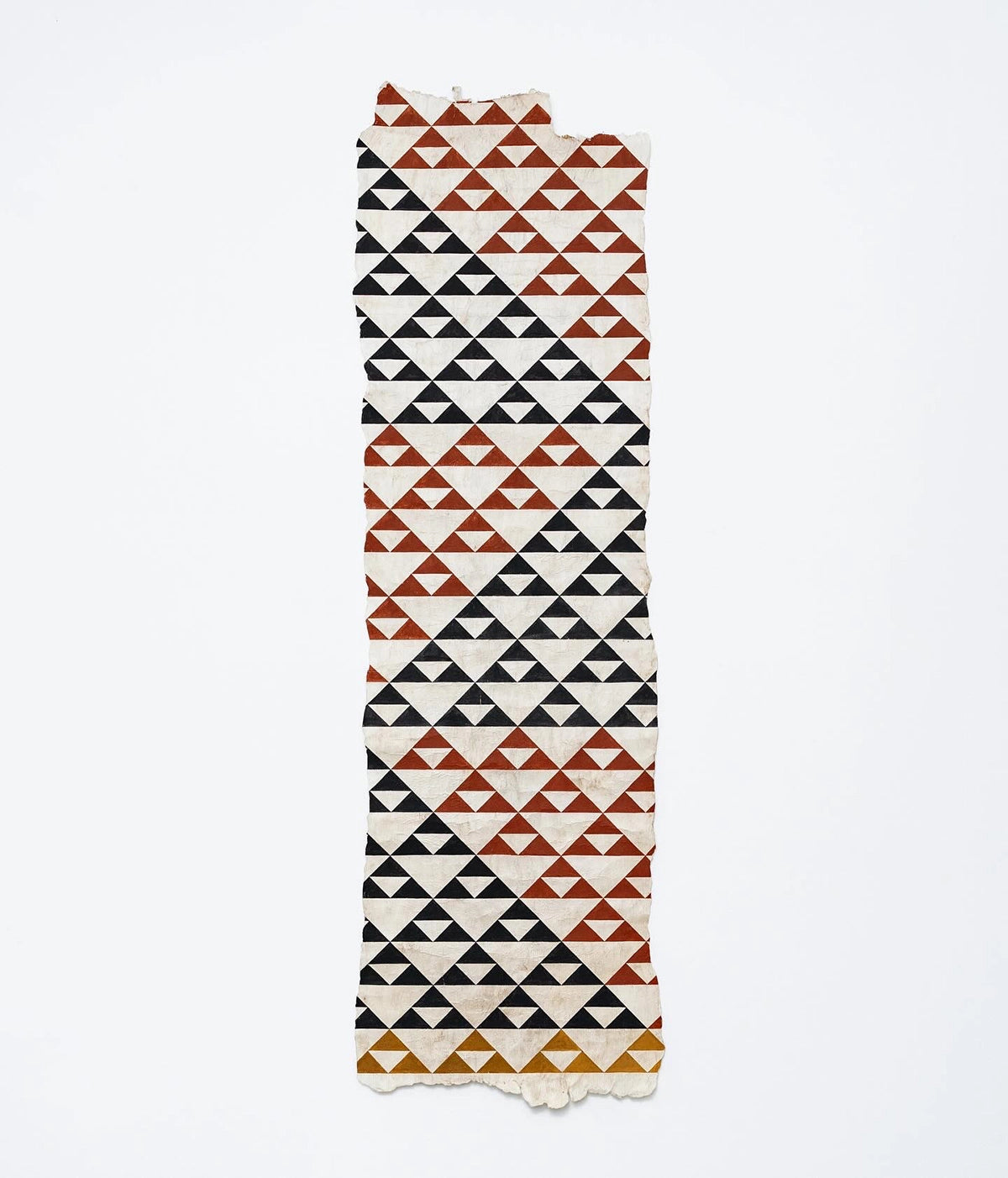
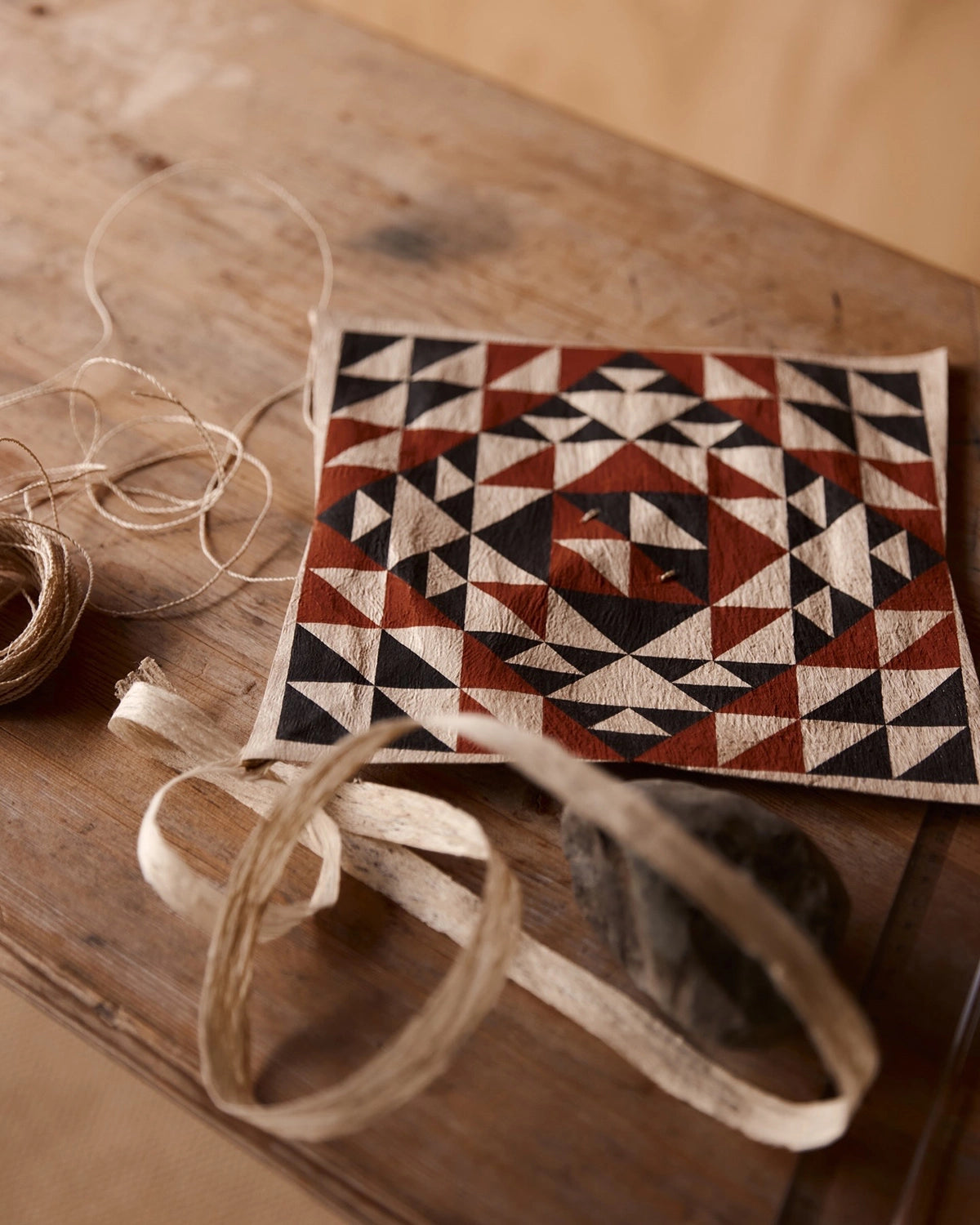
Recommended Reads
SEND ENQUIRY
Speak to the Designer
For deepening into the understanding of what you’re looking for in the creation of your piece book an appointment with us.
Fill out the form below to book an appointment. This can be done remotely if you can’t make it in store.
Contact Us
Please don’t hesitate to contact us for any questions or queries that you may have.
+64 09 366 3073
hello@zoeandmorgan.com


